28+ Best Japanese Horror Movies: Onryo, Kaiju, Gore, and Beyond
Explore the very best of Japanese horror movies with these must-see films.
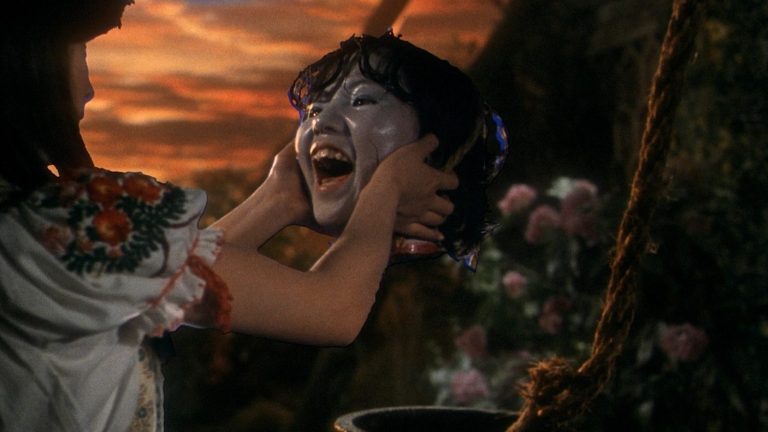
Table of Contents
Japanese horror movies exploded in worldwide popularity in the late 1990s with a wave of J-horror that lasted into the 2000s. While ghostly stories like Ring (1998) and Ju-On: The Grudge (2002) served as an entry point into Japanese horror for many people, the history of horror cinema in Japan is rich and varied.

Old Japanese horror movies (pre-war) overwhelmingly drew inspiration from ghost stories about onryo (vengeful spirits), kaibyo (ghost cats), and other folktales written during the Edo period (1600s to 1800s). After World War II, Japanese movies saw the rise of kaiju (or daikaiju, “giant monsters”) like Godzilla, Mothra, and Gamera. The 1960s started a trend of more transgressive (and bloody) movies, eventually leading to some of the most extreme shockers in history like All Night Long (1992) and the Guinea Pig series (1985-1990).
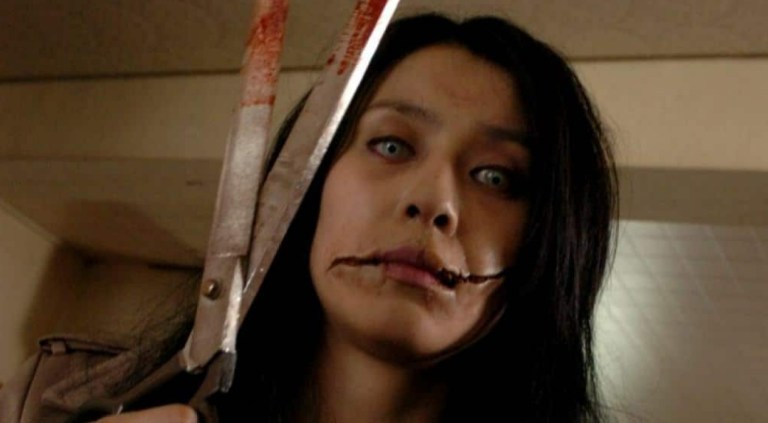
This list collects the best Japanese horror movies ever made. Special attention has been given to providing a wide range of different styles and genres. So whether you enjoy ghosts, monsters, blood, or psychological tension, you’ll find something here you’re sure to love.
Japanese Ghost Movies
Ugetsu (1953)

The most famous film from acclaimed director Kenji Mizoguchi, Ugetsu is a beautifully haunting tale of ambition, seduction, and the virtues of a humble life. A potter in feudal Japan goes into town to sell his wares, leaving his wife and child behind as dangerous bands of soldiers roam nearby. While in town, the potter encounters an enchanting woman who offers temptations that the potter may not be able to refuse. Though Ugetsu is likely the least horrific film on this list, it’s easily one of the best ghost movies ever made.
The Ghost of Yotsuya (1959)
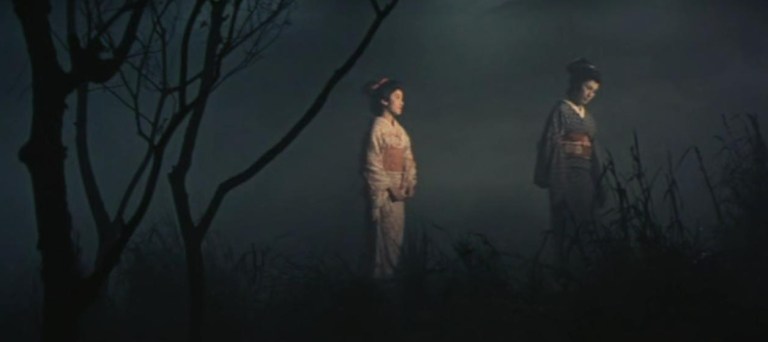
The Ghost of Yotsuya is a classic Japanese horror movie about revenge from beyond the grave. The film draws from traditional beliefs in vengeful spirits (known as “onryo”) that date back to the 8th century. This 1959 interpretation of the famous story contains some gorgeously horrific imagery as the spirit of Oiwa (Katsuko Wakasugi) attempts to drive her former husband mad with terror. Though the story has been told many times, this movie is considered the definitive version by many critics and fans.
Kwaidan (1964)
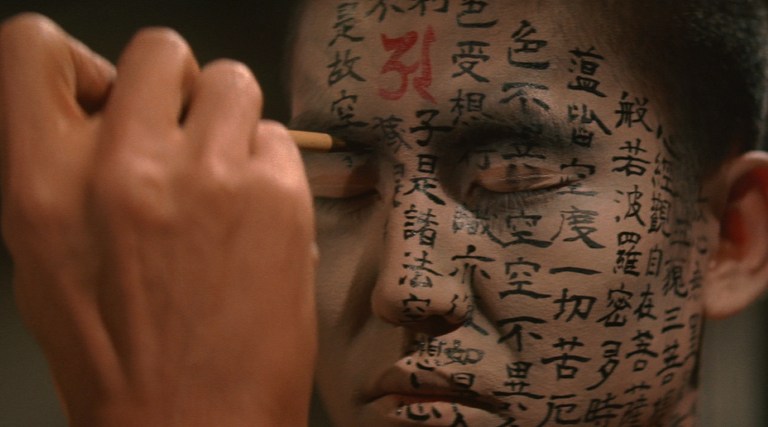
Considered a masterpiece by many, Kwaidan is an anthology of ghost stories inspired by Japanese folklore. Directed by Masaki Kobayashi, each of Kwaidan‘s four famous stories come from the writings of Lafcadio Hearn, an author who recorded the folk tales he was told while living and traveling in Japan in the 1800s. Stories include a vengeful spirit, a yuki-onna (snow woman), a bewitched minstrel, and an author who tells a story of ghostly apparitions in a cup of tea. Kwaidan is a great entry point into traditional Japanese storytelling.
Kuroneko (1968)
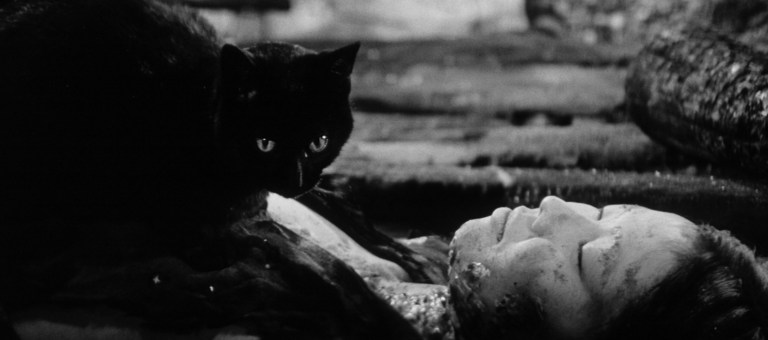
Ghost cats (known as “kaibyo”) play a large role in Japanese folk legends, and Kuroneko is the best of the mythological figure’s many representations on film. The story of Kuroneko (which translates to Black Cat) involves two women who are raped and murdered in feudal Japan, and who return as ghosts who lure men to their death. Tragic and beautiful, Kuroneko is essential viewing for anyone getting into Japanese cinema.
House (aka Hausu, 1977)
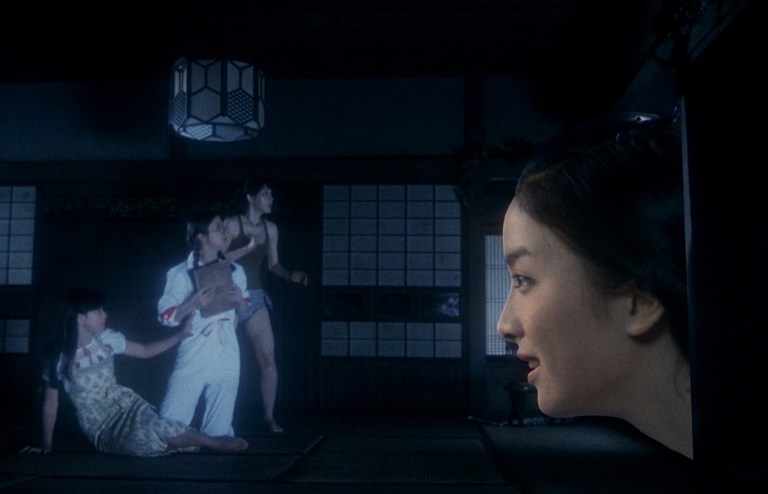
A cult classic often described as wacky and strange, House is an amazingly fun haunted house story that contains surprising depth. The plot focuses on a group of high school girls who intend to spend their summer vacation at an old house owned by their friend Oshare (Kimiko Ikegami). After they arrive, they begin to disappear as the house takes them one by one. They style of House is bright and cartoonish, and it can get quite silly. At the same time, it touches on heavy topics including family, love, longing, and loss. While the weirdness of House is usually overstated, the genius of it should never be understated.
Ring (aka Ringu, 1998)

With Ring, director Hideo Nakata captured the imaginations of people around the world. The story of a cursed VHS tape that dooms its viewers to die in terror seven days later touches on relatable modern fears, but its roots are firmly within Japanese culture. The now-famous ghost in Ring, Sadako (Rie Ino), is inspired by the vengeful spirits of Japanese folklore, and the use of a well is reminiscent of the traditional ghost story The Dish Mansion at Bancho. Ring combines classical and modern storytelling to create one of the scariest Japanese horror movies of all time.
Pulse (aka Kairo, 2001)
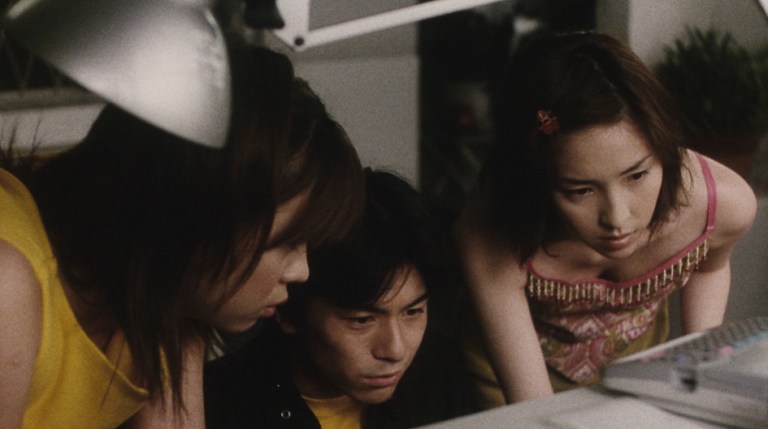
Pulse is one of the most unique ghost movies to come out of the late-90s, early-2000s cycle of J-horror. The story is told as two parallel plot lines that follow Michi (Kumiko Aso) and Kawashima (Haruhiko Kato) as they each deal with a mysterious force that is affecting everyone around them. People in Tokyo are becoming depressed to the point of suicide at an alarming rate, and the mystery behind the deaths may have something to do with a ghostly presence seen on the internet. Pulse becomes a study in loneliness as the mystery unravels, but it does still have some very creepy supernatural scenes, especially in the first half of the film.
Dark Water (2002)
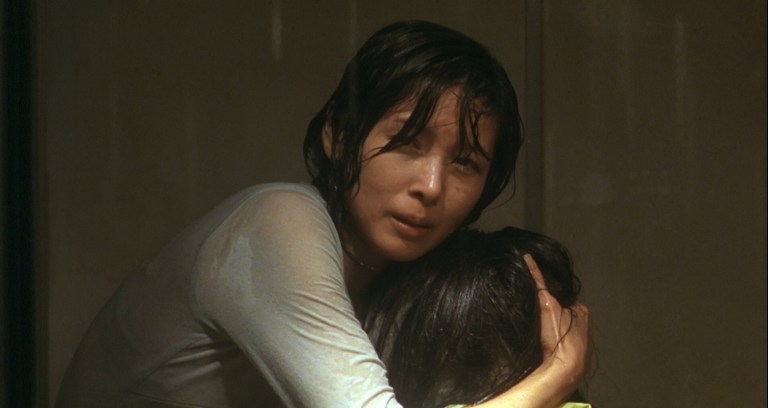
Dark Water is a tragic ghost story that builds up to a wonderfully creepy finale. The story follows a mother, Yoshimi (Hitomi Kuroki), in the midst of a divorce as she tries to start a new life with her six-year-old daughter Ikuko (Rio Kanno). The two of them move into a new apartment, and a growing leak in their ceiling represents an even greater danger lurking within the apartment complex. Dark Water is a sad yet beautifully told story.
Ju-On: The Grudge (2002)
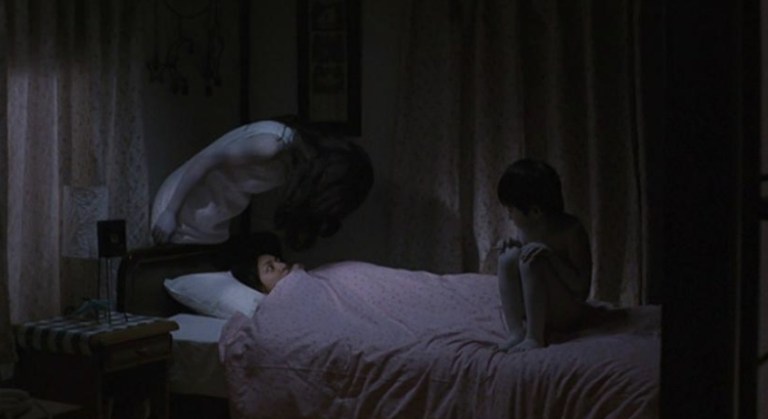
Ju-On: The Grudge is a fun and frightening movie that takes the idea of a vengeful spirit and places it within a haunted-house-style narrative. The movie is presented almost like an anthology film, with the fates of multiple characters taking place within separate segments. Each segment is tied together by a house that curses nearly everyone who steps inside it. Ju-On: The Grudge relies more on jump scares and repeated creepy moments than slower builds like Ring or Dark Water, but it’s still a highly effective horror movie that inspired multiple sequels, remakes, spin-offs, and even a television series.
Monsters
The Invisible Man Appears (1949)
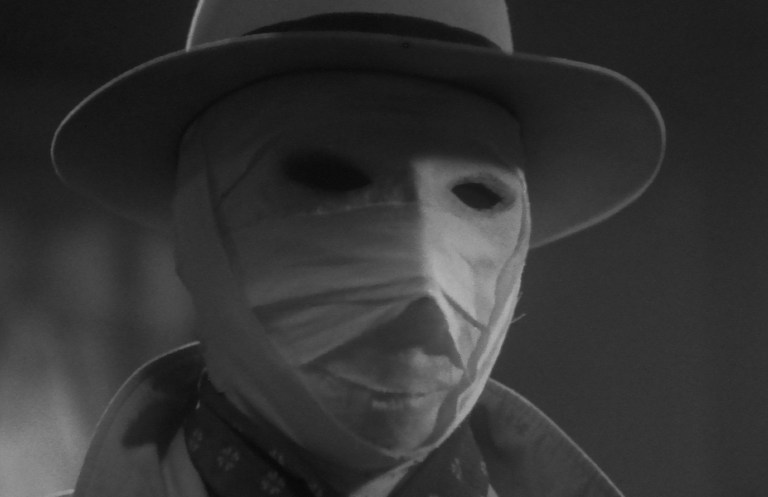
The Invisible Man Appears is a fascinating relic of post-war Japanese filmmaking. The movie is about a young scientist (Kanji Koshiba) who is tricked into taking an experimental invisibility formula in order to steal a valuable necklace. While the movie is more sci-fi/crime than sci-fi/horror, it is a super fun look at a Japanese interpretation of a classic horror villain from the Western world.
Godzilla (aka Gojira, 1954)

Much has been said about director Ishiro Honda’s seminal kaiju classic Godzilla. Most monster fans already know about its tremendous influence on the genre around the world, and most know about Godzilla‘s allusions to the atomic bombs dropped on Hiroshima and Nagasaki. For those who have never seen this, the original Japanese version of the movie from 1954, they may learn that it is still an effective and utterly entertaining piece of cinematic history.
The Vampire Doll (1970)
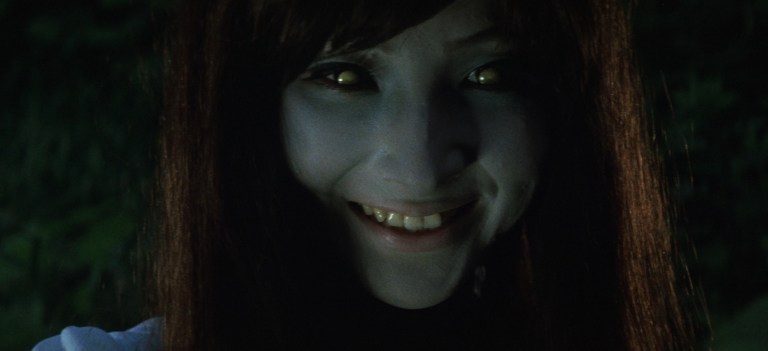
Borrowing heavily from European and American vampire films, The Vampire Doll is a fun new spin on the gothic vampire film. Kazuhiko (Atsuo Nakamura) returns to Tokyo from a trip overseas, but he goes missing after venturing out to his fiancé Yuko’s (Yukiko Kobayashi) isolated country home. Kazuhiko’s sister (Kayo Matsuo) and her fiancé Akiar Nakao) investigate, uncovering a dark secret. Japanese vampire films are a rarity, and The Vampire Doll is one of the best. This film is the first in what’s known as The Bloodthirsty Trilogy, a trio of vampire films released by Toho studios which also includes Lake of Dracula (1971) and Evil of Dracula (1974).
Gamera: Guardian of the Universe (1995)
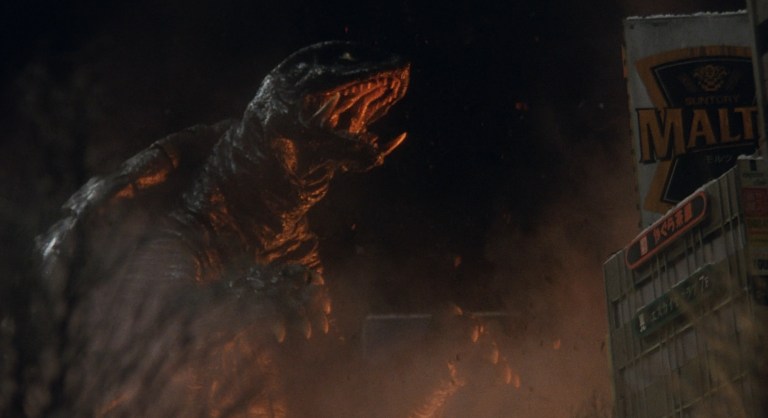
As a movie monster, Gamera has always lived in the shadow of Godzilla. However, Gamera: Guardian of the Universe is the franchise’s best effort at setting itself apart. Crafted using suitmation, miniatures, and quaint 1990’s computer graphics, this 1995 installment of Gamera is a blast. The giant flying turtle Gamera is woken up just as a trio of bat/pterosaur monsters (called Gyaos) begin attacking populated areas. The beasts, of course, must come together in a fight to the death as humans watch as their fates are decided.
Shin Godzilla (2016)
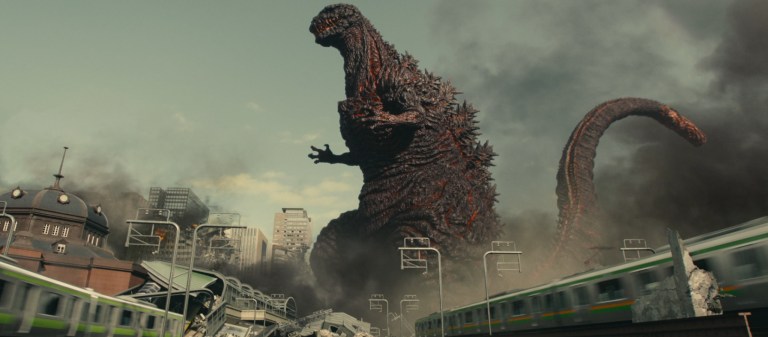
Shin Godzilla went back to the roots of the character/monster in this reboot of the series. Like the original film from 1954, Shin Godzilla can be seen as a huge metaphor for real-world disasters. The movie alludes to the 2011 nuclear disaster in Fukushima caused by the Tohoku earthquake and tsunami. It also satirizes the bureaucracy and politics involved in disaster response in Japan. And even of you’re not into that sort of relevant storytelling, Shin Godzilla of course features an awesome new version of Godzilla rampaging through city streets.
Extreme and Gory Movies
Jigoku (1960)
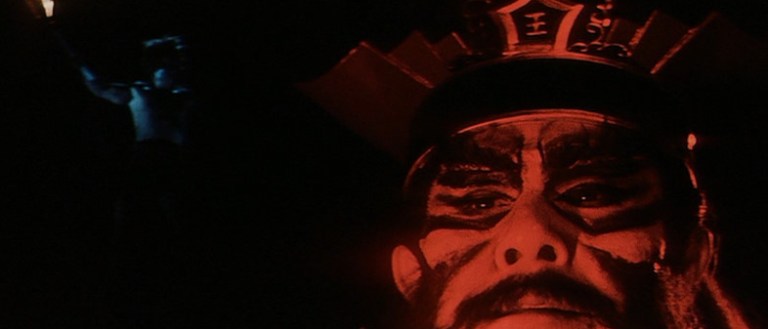
Also known in English as The Sinners of Hell, Jigoku is a story inspired by the Buddhist concept of Hell. As the movie begins, Shiro (Shigeru Amachi) is involved in a hit-and-run that results in the death of a man. Shiro’s journey eventually leads him to a type of purgatory where the people from his life are being punished for their sins. The final act of Jogoku is easily the part of the movie that gets the most attention, and rightfully so. The final 40 minutes of the movie are filled with dreamlike visions of pain and suffering, the likes of which weren’t seen in other Japanese movies from the time.
Shogun’s Joy of Torture (1968)
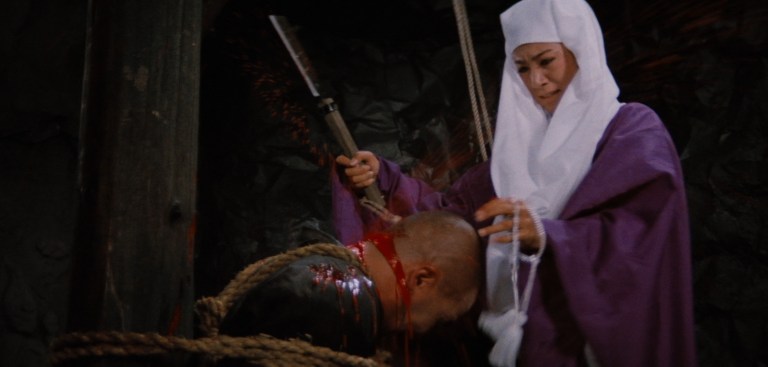
Directed by genre-film master Teruo Ishii, Shogun’s Joy of Torture delivers an anthology of three stories depicting supposedly true stories of depravity during the Edo period of Japan. Nudity, torture, and bright red blood fill the screen in this, the first of a series of similarly themed movies known collectively as The Joys of Torture series.
Guinea Pig 2: Flower of Flesh and Blood (1985)
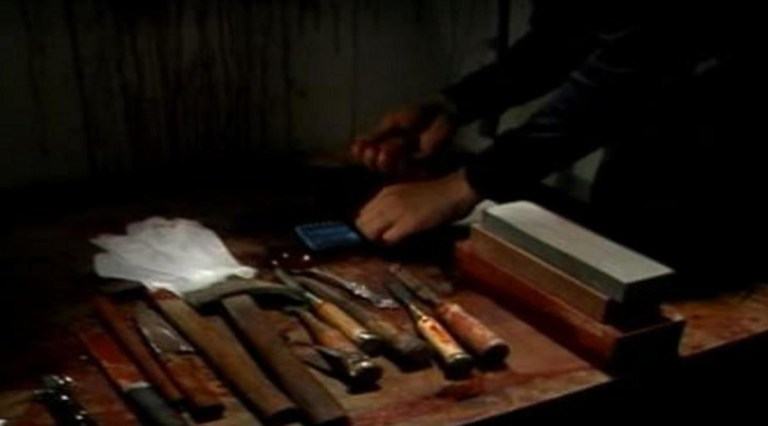
Presented as a recreation of a real snuff film received by the movie’s director, Guinea Pig 2: Flower of Flesh and Blood falls somewhere between an art film and a splatter movie. The plot is about as basic as you can get, with its short run time devoted almost entirely to extremely graphic depictions of a woman’s body being dismembered. Flower of Flesh and Blood certainly isn’t for everyone, but it may be the best example of the extremes horror on home video went to in Japan in the 1980s. Later films in the Guinea Pig series tended to add comedy or a more traditional narrative structure.
Evil Dead Trap (1988)
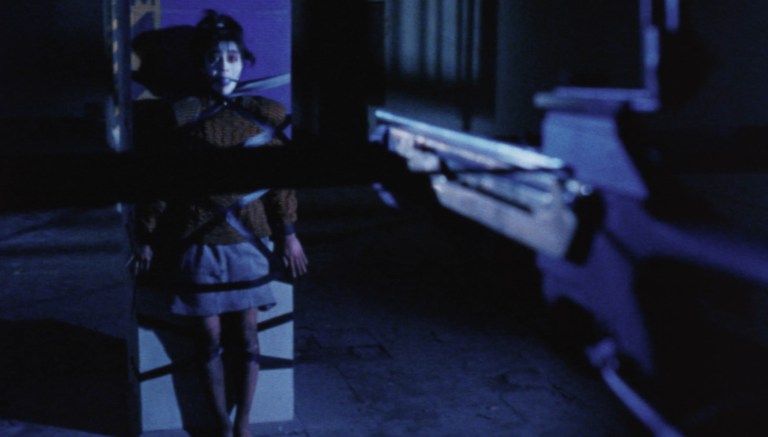
Japanese slasher movies are rare, and they tend to be quite different from their counterparts from the other side of the world. That said, Evil Dead Trap is one of the most fun slashers to ever come out of any country. Nami (Miyuki Ono), a late-night TV host, leads a small crew to an investigation of an abandoned and isolated factory where Nami believes a real snuff film was recorded. The investigation doesn’t go as planned, and Nami’s crew are picked off one by one in a series of elaborate traps and up-close encounters.
Tetsuo: The Iron Man (1989)
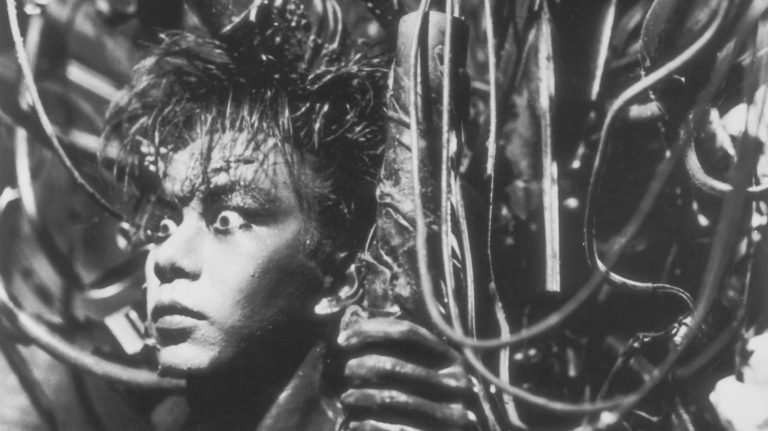
Tetsuo: The Iron Man uses practical effects and stop-motion animation to bring to life one of the most bizarre horror movies of all time. The plot is difficult to coherently describe, and any sort of plot cohesion is secondary to the movie’s unforgettably dark and twisted aesthetic. At its most basic, Tetsuo: The Iron Man is about a man whose body gradually transforms into a monstrosity with plenty of blood, sex, and metal. With its industrial soundtrack and frantic pace, it is truly a mesmerizing movie.
Splatter: Naked Blood (1996)
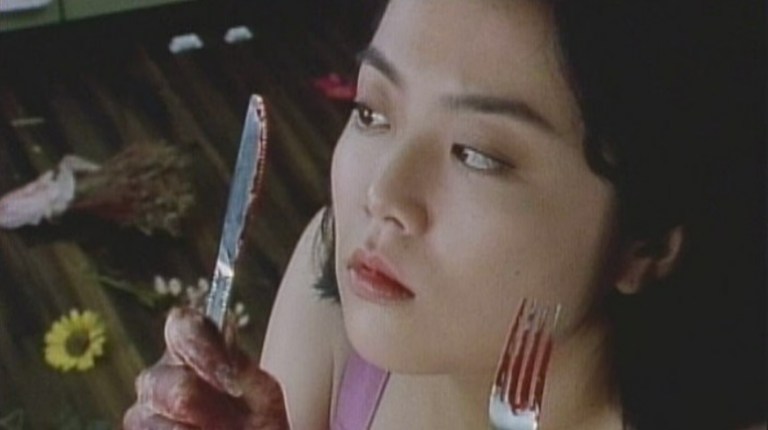
Directed by Hisayasu Sato, Splatter: Naked Blood is one of the most uncomfortable gore movies to ever come out of Japan. Eiji, a young scientist, has developed a serum he believes will help humankind by turning the sensation of pain into pleasure. Eiji secretly tests the serum on three women without their knowledge, and the results are far more bloody and horrific than he expected. Even hardened gorehounds are sure to squirm during at least a few of Naked Blood‘s scenes.
Audition (1999)
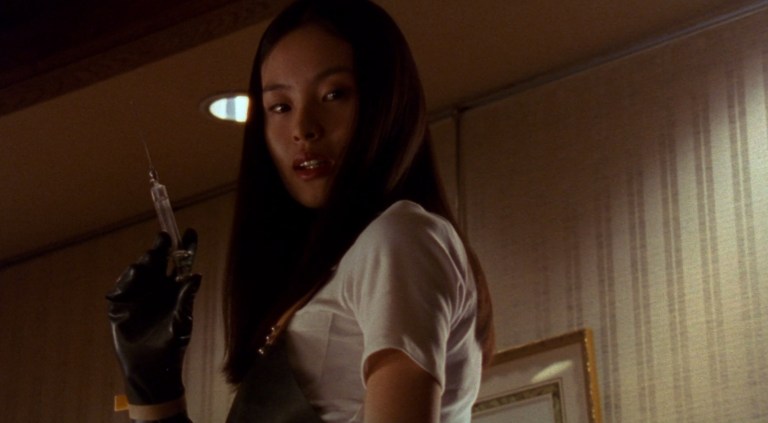
Audition became known primarily for its shockingly violent finale, but it is also one of director Takashi Miike’s most finely crafted movies. The story is about a widower, Aoyama (Ryo Ishibashi), who is talked into holding a fake “audition” for the part of his new wife. Aoyama falls for Asami (Eihi Shiina), but Asami has a number of dark and disturbing secrets Aoyama is better off never discovering. Audition is part mystery and part psychological horror, and it is completely amazing.
Suicide Club (2002)
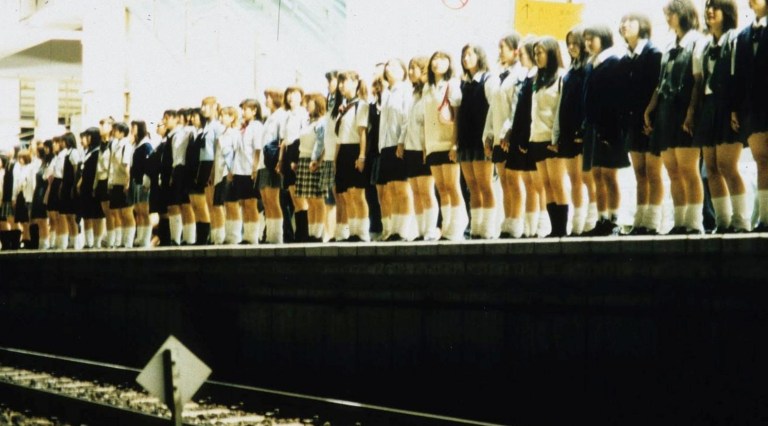
Suicide Club (also known as Suicide Circle) begins with the mass suicide of a group of seemingly normal schoolgirls who jump onto the tracks in front of a speeding train. Over the next few days, more suicides follow which lead detectives on a search to find out why so many suicides are occurring. Suicide Club is odd and gruesome, and, even though it can be difficult to fully decipher, it is one of the more thought-provoking films of its kind.
Psychological Horror
A Page of Madness (1926)

A rare gem of very early Japanese cinema, A Page of Madness is an unsettling look into the perception of mental illness. The silent film takes place in an asylum where a man works as a janitor so he can be close to his wife. The janitor’s wife in an inmate in the asylum, driven insane by her husbands cruelty. Through avant-garde techniques, A Page of Madness subjectively shows the janitor’s mental state as he loses grip on the line between fantasy and reality.
Onibaba (1964)
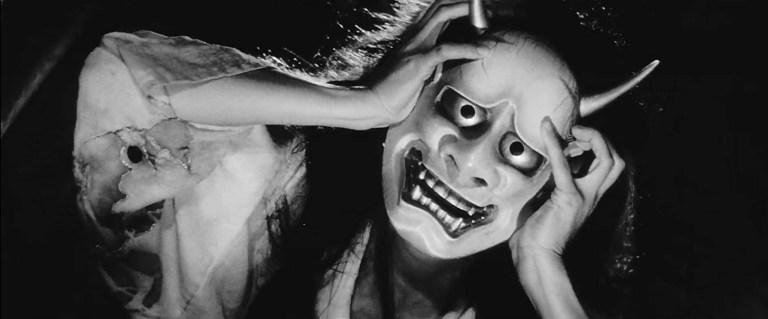
Onibaba is a classic psychological thriller with a mystical twist. In the 1300s during a time of civil war, a woman and her daughter-in-law make a living by killing roaming samurai and bartering with their weapons and armor. Their routine is upended by a man who comes between them, and by a lone samurai who wears the mask of a demon. Onibaba is a beautiful movie that works as a tense and entertaining thriller, but it also digs deep into Japanese art and folklore to give the movie layers of meaning.
The Face of Another (1966)

Identity is the main focus of the psychological thriller The Face of Another. Okuyama (Tetsuya Nakadai) has his face disfigured in an accident, and he is given an experimental prosthetic which changes his appearance. Okuyama tries living a new life with his new face, and he finds that his personality is changing as well. With gorgeously stylized visuals and a thought-provoking story, The Face of Another is a standout movie in the Japanese New Wave of the 50s and 60s.
Blind Beast (1969)

Blending outlandish imagery, eroticism, and some very disturbing twists, Blind Beast is a wonderfully dark experience. Yasuzo Masumura directs this film about a beautiful model, Aki (Mako Midori), who is kidnapped by a blind sculptor, Michio (Eiji Funakoshi). Michio wants to use Aki as his muse, and his obsession with art and the female form begins to have unexpected effects on Aki.
Cure (1997)
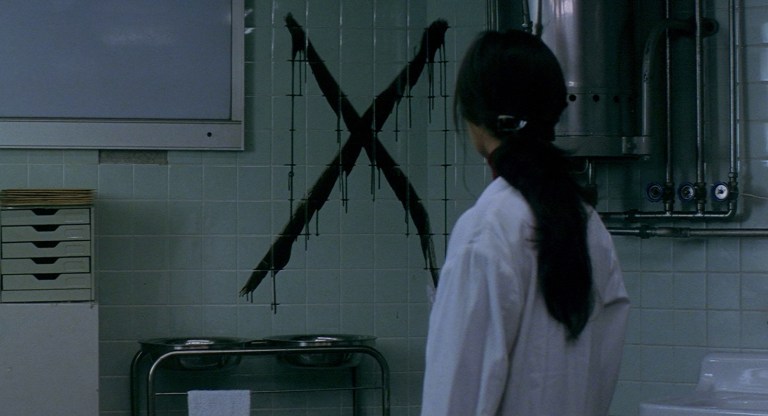
Cure is a tense psychological horror movie from writer/director Kiyoshi Kurosawa. Koji Yakusho stars as police detective Kanichi Takabe who is on the case of a series of gruesome murders. Each victim is found with an “X” carved on their body, and each murder is perpetrated by a different person who has no explanation for why they killed someone. Coming out in an era of Japanese horror cinema dominated by ghosts, Cure is an exceptional movie that sets itself apart with its expertly crafted story of murder and mystery.
Confessions (aka Kokuhaku, 2010)
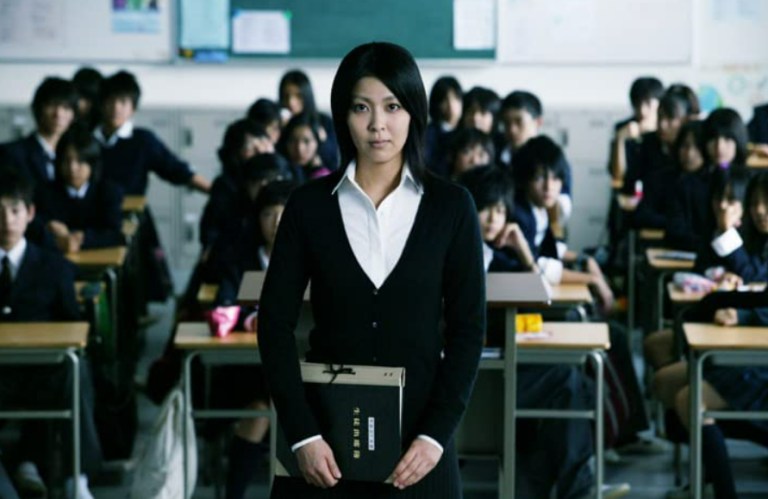
Confessions is a moving and emotionally complex movie that explores grief and revenge. Yuko Moriguchi (Takako Matsu) is a high-school teacher whose young daughter is found drowned in the school swimming pool. Yuko suspects murder, and her act of revenge provides the driving force for this powerful psychological thriller.
More Great Japanese Horror Movies
- Horrors of Malformed Men (1969) – Teruo Ishii wrote and directed this gruesome movie about a man who journeys to an island where a mad scientist who has plans to turns people into horrible monstrosities.
- Demons (aka Shura, 1971) – A samurai loses his grip on reality and goes on a path of revenge after being tricked out of the money he needs to join the 47 Ronin.
- Hellish Love (1972) – A pinku eiga (softcore movie) based on the traditional Japanese ghost story The Peony Lantern.
- Zigeunerweisen (1980) – From visionary director Seijun Suzuki, Zigeunerweisen eschews traditional narrative structure in favor of a surreal sequence of events about a college professor and his friend.
- The Black House (1999) – An atmospheric movie about an insurance agent who investigates a family when he receives a call from them asking if suicide is covered in their insurance policy.
- Battle Royale (2000) – Though not really a horror movie, the level of violence in this story about a high school class kidnapped and forced to kill each other until only one student survives lands Battle Royale on many horror lists. Regardless of its classification, it’s fantastic.
- Uzumaki (aka Spiral, 2000) – Based on the creepy manga of Junji Ito, a small town becomes obsessed and overrun by spirals in many different forms.
- One Missed Call (2003) – Director Takashi Miike’s entertaining J-horror movie about phone calls from the future that predict the receiver’s time of death.
- Marebito (2004) – A fear-obsessed man (Shinya Tsukamoto) discovers a mute woman in the tunnels below Tokyo, and, after taking her to his home, discovers that she has very specific (and dark) dietary needs.
- Reincarnation (2005) – From director Takashi Shimizu, a young actress set to star in a movie based on a real massacre is haunted by the victims.
- Noroi: The Curse (2005) – Found footage and folk horror come together brilliantly in this horror movie about a documentary filmmaker investigating a series of supernatural events.
- Tokyo Gore Police (2008) – Gallons of blood fill the screen in this action-packed splatter movie about a female police officer killing mutated humans.
- Tag (2015) – From director Sion Sono, Tag follows a young woman on a series of violent and bizarre adventures like she’s running through a dream.
- Creepy (2016) – While looking into a old case about a missing family, an ex-detective’s life gets creepy in this thriller from director Kiyoshi Kurosawa.
- Sadako vs. Kayako (2016) – The ghosts of The Grudge and The Ring franchises come together in this surprisingly fun crossover of the dominant J-horror franchises.
- One Cut of the Dead (2017) – A brilliant comedy told in two parts with found footage, zombies, and a lot of heart.
